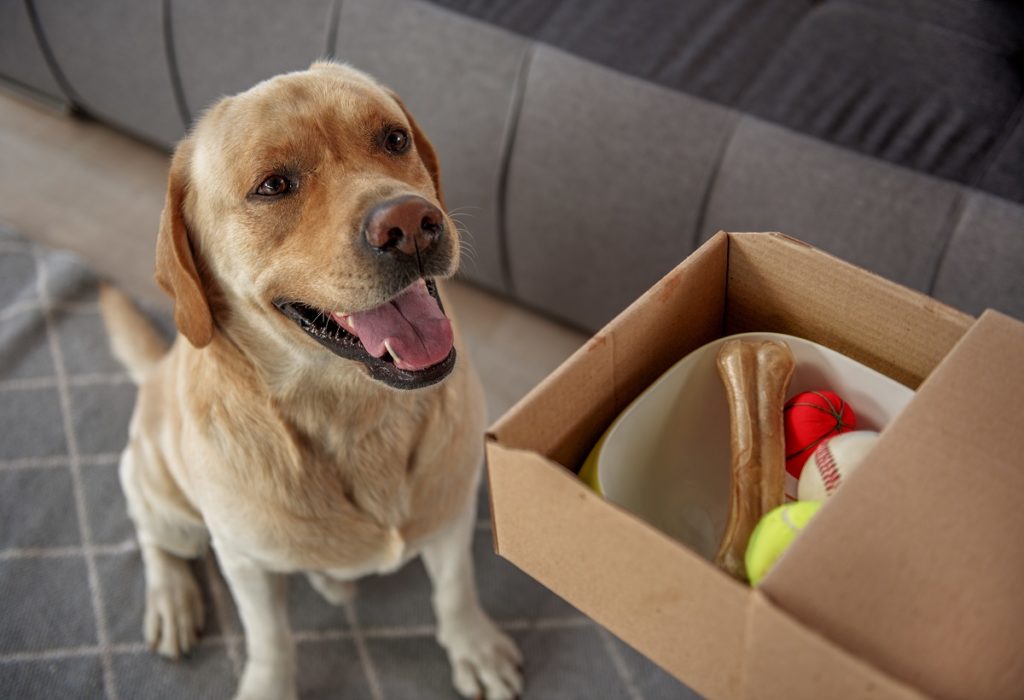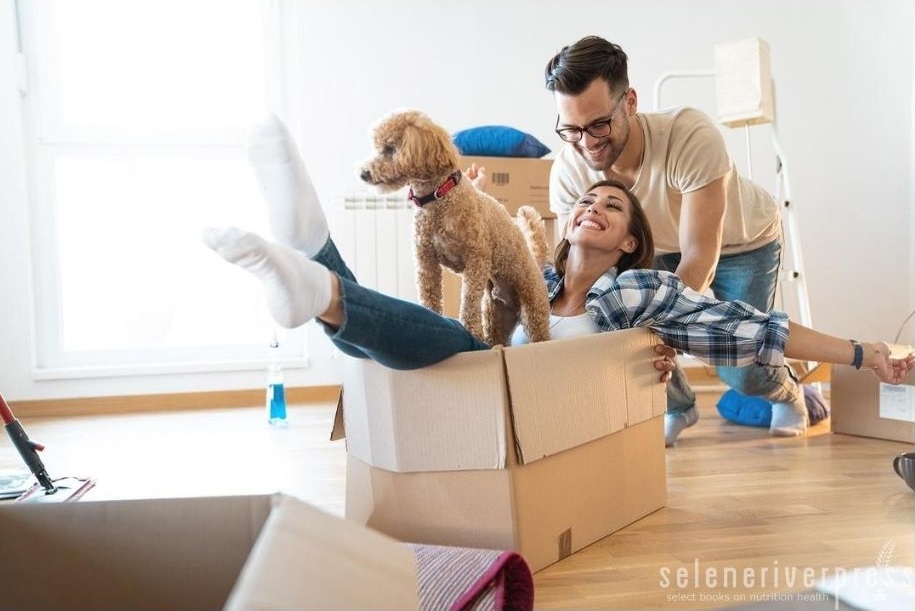Is moving to a new home in your future? This could be an exciting time. But if you have pets, there are some additional challenges to consider. After all, dogs, much like kids, love routine, and nothing disrupts routine quite like a big move. Let’s talk about some things you can do to make this process as smooth as possible for both of you.
Steps for the Owner
If you’re moving out of state, first check on licensing requirements or restrictions in your new location. Most states require a Certificate of Veterinary Inspection (CVI) in some form. The CVI ensures that only healthy animals are transported across state lines.
You want to know up front if you’ll be required to obtain a license for your cat or show proof of an up-to-date rabies vaccination for your dog. This guide to moving with pets will help you figure out what needs to be done to transport your pet across state lines.
You’ll also want to update your pet’s tag with your new address. If they’re microchipped, you can update your contact details by getting in touch with the pet microchip registry you enrolled with. (You can find contact information on the company’s website.) This is an important step that many pet parents overlook.
Flying with your pet? You’ll need to find a pet-friendly airline. In this regard, size has a bearing on travel regulations. If your dog is small enough to fit in a carrier under the seat in front of you, you can bring it onboard. Larger dogs ride in the hold in a pet carrier that you provide. (The International Air Transport Association provides guidelines that most airlines follow as well as a list of pet carrier requirements.)
You will also need to find a new veterinarian when you move. Ask your current vet if they can refer you to one. If not, research veterinarians in your new location online. Make sure they are accredited by the American Animal Hospital Association, which evaluates veterinary practices on standards for patient care, pain management, surgery, facilities, medical records, cleanliness, emergency services, dental care, and other criteria. Accreditation is not required by law, but it shows a commitment to maintaining the highest standards of care.
To find a holistic vet, visit the American Holistic Veterinary Medical Association. Also find out what concerns they have for heartworm, fleas, ticks, and other parasites. Your current veterinarian can prescribe preventative medications if needed.
Steps for the Dog
Most dogs do well in the car. But car travel involves more than just loading the animal in the back seat and heading off, especially over long distances. Pack a care bag for your pet that includes food, bottled water, a water bowl, waste bags, a few toys, and/or a favorite blanket. Avoid giving your dog a large meal before the drive, and make multiple stops for potty breaks and exercise. You may like the idea of Fluffy laying her head on your lap, but the safest method of car travel is to put your dog in a safety-certified, crash-tested crate.
Dogs that become anxious during travel might need a mild sedative. Some friends of mine have found great results with a more natural form of physiologic tranquilizers. Though these products are Standard Process products for humans (rather than their veterinarian line), they contain mineral combinations that can provide support for the parasympathetic side of the nervous system and bring things into balance.
In order of increasing potency, these products include:
- Organically Bound Minerals
- Min-Tran
- Min-Chex
- Orchex (the most potent)
Homeopathic and flower essence remedies can also work well on animals. For flower essences, Bach Rescue Remedy for Pets is a great option. Desert Alchemy Flower Essences has a remedy for everything and everyone, with recommendations for specific emotions and mental states. You can even get a consultation to help create a formula for your pet’s particular needs. These remedies benefit both humans and pets during this entire adventure.
Pets are similar to children as far as needing additional love and assurance that everything is going to be okay. I encourage you to take a few minutes out of your busy day of packing and organizing for pets and cuddles. Keep their routine as consistent as possible. Make sure to feed them on time, give them their daily walks, and have a regular bedtime.
And remember, research shows that your dog can tell when you are happy or sad. Their ability to connect with humans is unlike any other species. They can sense our emotions, read our facial expressions, and even follow our gestures. So try to send good vibes even if you’re feeling stressed.
If your travel includes flights, check out this article from Million Mile Secrets on ways to help your pet on an airline trip.
Moving Day
Moving day is here! When you arrive at your new home, your pet is going to feel your excitement and stress. Take time to walk through the house room by room together. Once you’ve explored the entire house and you know it’s safe to roam, let them explore on their own off the leash. Unpack your pet’s personal water and food bowls, toys, bed, and any other familiar items. It’s a good idea to designate a “safe room” (or their crate) where you can put your dog and their things while you unpack the moving truck. This way, you can remaing worry free as you go in and out of the house, and your pet can decompress in a less stressed environment.
How easy the transition to a new home will be depends on your pet’s personality, age, and health. They may not immediately appreciate their fancy new digs and exhibit symptoms of fear or anxiety. Indoor “accidents,” bad chewing behavior, whining, barking, or howling may be signs that your dog is feeling vulnerable and insecure.
If your dog is the nervous Nelly type, I recommend that you continue the Standard Process supplements and/or add in Canine Adrenal Support or the human product Drenamin for larger dogs. I also recommend using lavender essential oil, which is widely known for is its ability to promote a relaxing atmosphere. The lovely aroma will benefit the entire household as well.
Before you let your dog outside, make sure the yard is safe and secure. Check gates and any holes along the fence. The last thing you need is to for your dog to go off and explore a neighborhood that neither of you are familiar with.
When you do venture out together, take some extra time to let your dog investigate all of the new smells. Enjoy the leisure time, free of stressful rushing and distraction—at least for the moment.
Finally, keep in mind that dogs are generally quite content as long as their common group (people and pets) doesn’t change drastically and their daily routine remains fairly constant.
Images from iStock/Nadasaki (main), cyano66 (dog on couch), YakobchukOlena (dog with box).



